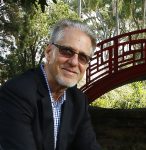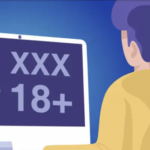Rehab and Harm Reduction: An Interview with WHOS director Garth Popple

The subject of drug rehabilitation formed part of the national discussion recently, after Australian Story aired the Breaking Good documentary. It told the story of Peter Lyndon-James, a former ice user, who now runs the “nation’s strictest” rehab clinic.
Shalom House in Perth is run like a boot camp. Men who undertake the program have their heads shaved, perform manual labour during the day and attend Church four times a week. They also go “cold turkey” off all substances, including cigarettes.
Shalom House’s controversial program is gaining notoriety, as it’s having a level of success. Although, many harm reduction advocates have spoken out against Lyndon-James’ methods of treatment.
According to Dr Stephen Bright, senior lecturer of addiction at Edith Cowan University, there’s little evidence that hard-line rehabilitation approaches work, and this is why the drug treatment field abandoned these types of interventions 30 years ago.
Dr Bright outlined that a level of empathy with clients is essential for successful treatment outcomes. “Accurate empathy is inherent to good clinical practice though did not appear to be one Peter’s strengths and this is likely modelled to the staff at Shalom House,” he wrote in a statement.
We Help Ourselves
Luckily for people in the community seeking drug treatment, there are alternatives. We Help Ourselves (WHOS) runs a series of evidence-based therapeutic programs aimed at achieving recovery from alcohol and other drug dependency.
WHOS runs six residential services in NSW and Queensland, including centres in Sydney’s Rozelle, the Hunter Valley and one on the Sunshine Coast. Their centres are based on the therapeutic community model, which actively engages a peer-group to participate in the recovery of all.
The organisation also runs aftercare and family support programs.
But where WHOS differs from a lot of traditional rehabilitation treatments, is that they promote harm reduction. Each therapeutic community has a harm reduction worker, who’s responsible for ensuring that safe injecting equipment and condoms are available.
It’s about taking an honest approach to rehab. Not all clients are going to abstain, and therefore, if they do partake in drugs, they should do so in the safest way possible.
A harm reduction pioneer
Garth Popple is the executive director of WHOS. He’s been working in the Alcohol and Other Drugs non-profit sector since 1979. And in his time, Mr Popple has helped out over 40,000 people.
It was Popple who led WHOS down the harm reduction path. At the onset of the HIV/AIDS epidemic in 1986, Popple realised that people were leaving the therapeutic communities, only to return HIV positive. And he understood he had to do something to prevent further transmission.
Sydney Criminal Lawyers® spoke with Garth Popple about the way a therapeutic community works, the need to incorporate harm reduction into drug treatment practices, and the importance for organisations like WHOS to forge relationships with drug user rights groups.
Firstly Garth, your centres are based on what’s called the Therapeutic Community model.
What is a Therapeutic Community? And what are its benefits?
The therapeutic community model started its origin in self-help. And if you want to put it down to its most basic elements, it is the people in the therapeutic community helping each other, so the community is the essence of how the treatment works.
It’s self-help. And if people ask me what is the difference between that and the residential rehab, I’d say in most forms of treatment they treat the client as the patient.
In the therapeutic community, we don’t go down that road. We ask people through the self-help nature of peer groups, or peer support, to help each other and in that way they’re helping themselves.
Basically, we facilitate the process of people helping each other and helping themselves, rather than give them all the answers, or standing in front of them with a white coat telling them how they’ve got to fix themselves.
So it differs from a lot of other rehabilitation services that are available in the community?
This is the interesting point. In the therapeutic community model we have actually defined standards and elements of treatment.
Other places who call themselves a residential service, what does that mean? Does that mean they get up at eight o’clock and watch TV until twelve o’clock? What are they doing? I think the trouble with most residential services these days is, what are they actually doing that they can call a treatment?
So we actually have a defined model. The Australasian Therapeutic Communities Association (ATCA) defines the treatment model and we are members of that association. I’m the ATCA chairperson at this stage. We have treatment manuals, peer review manuals and standards that people have to attain before they can call themselves a therapeutic community.
WHOS is more aligned to the therapeutic community model in Europe, than with America’s. Because in the old days, the American therapeutic community had very punitive measures.
As a matter of fact, when we started handing out needles, syringes and condoms in 1986, the World Federation of Therapeutic Communities discussed taking away our membership. Because they thought we were promoting drug use by doing that.
Now, I’m the deputy president of the World Federation of Therapeutic Communities, where harm reduction is just a standard component of the communities.
So it took a bit of a struggle to get the abstinence-only model to come across to utilising harm reduction, accepting the fact that for every 100 people that go to the therapeutic community, probably only 30 to 40 percent of those people will be able to attain the goal of abstinence.
So what are we going to do about the other 70 percent? Well, we’re going to give them education around safe needle use, harm reduction and CPR, resuscitation techniques.
We’ve got to actually do things that help people stay alive and infection free, when they’re either continuing their drug use or waiting for another day to enter treatment again.
WHOS runs a variety of different treatments options, including abstinence, reduction and stabilisation. Can you tell us a bit about the different treatments you offer?
We started historically as an abstinence-only therapeutic community. With the onset of HIV/AIDS, when I was the general manager, I saw people coming back HIV positive. And I noticed that this was crazy.
We said back then, “We have to do something about helping people who are coming back HIV positive to make sure they don’t infect other people. And prevent people who aren’t infected, from getting infected.”
In 1986, we started making syringes and condoms available inside the rehab. We called that common sense. Later, it was called harm reduction.
We moved from the old American-style of therapeutic communities, where abstinence-only was the standard of success.
We started measuring recovery as our model. It means that you may come in with a heroin or alcohol problem, and any movement towards lessening the harm is definitely a move towards recovery and a health gain.
Someone might leave and not use heroin again. But they might smoke a bit of dope and have a couple of beers. But they’ve stopped reoffending.
They may have built links back to their family. They may have got some part-time employment. So we’re sitting there saying, “That’s a health gain. That’s resocialisation.” That person is not going for the gold standard of abstinence-only.
Now maybe abstinence-only is not achievable for some people and nor do a lot want that. We decided to say, “The therapeutic model is a recovery program. We’re going to use that model as our model, whether your treatment goal is abstinence, reducing the level of harmful drug use or stabilisation on your current drugs.”
Everything we do within that is reducing harm to the point where people are sharing syringes less or using condoms more often. People are getting a bit of part-time work and they’re not reoffending.
So it’s getting them to a point where you stop the downward spiral and people are getting some normality back in their life, whatever their perception of normality is. It could be just, “I’m getting through my welfare cheque from A to B, rather than using it all in one day, and on one shot.”
The therapeutic community model is very adaptable no matter what treatment or reduction goal you have.
We introduced a self-support, self-help treatment. We give them all the products we can give them, while they’re with us, which is three to four months, before they go into aftercare.
But, it’s like I say, you can lead a horse to water, but you can’t make it drink. We’re in the business of trying to make that horse thirsty. Now, what level of thirst depends where that person is in their drug using career, or where their motivation is.
So if we can get a bit of reduction in harm, or 100 percent, or a reduction in syringe sharing, or an increase in condom use, it’s all going in the right direction, rather than being stuck in the downward spiral.
WHOS runs a couple of centres in regional areas. However, there’s a lack of these type of services in those parts of the country.
What’s it like for a person in a regional area who needs help with their substance use?
Regional areas are more likely to have ice use, rather than heroin these days. That has always been the case in regional areas, where the warehouses that amphetamines are being made in are found in a lot of cases. So it’s more accessible to them.
In the old days, you needed a supply chain to get hold of your heroin. Which is why up in the North Territory Oxycontin was more popular, because heroin wasn’t coming in that route. It’s a bit like the old heroin signature programs, whichever route the heroin took, you’ve got a lot of drug use along those areas, and HIV as well.
In regional areas, you would go into a detox.
If you put your categories of drug use into mild, moderate and severe. We take the severe end. We’re taking the people who have lost the ability to turn up to a day program, or turn up and keep appointments at a community health centre. We’ve got the people who’ve maybe been arrested a couple of times.
They’ve turned up to a detox, and then the detox talks to us about getting them a bed.
If you’re in the mild and moderate, then you’ve got to be talking to community health centres, or local hospitals about having an appointment to see their drug and alcohol worker. And you might be able to see a psychologist, or an NGO who just does case management. That’s where it’s at in a regional area.
But if you’re talking outback, like Bourke, then you’ve got a real problem, because if you want to go to one-on-one counselling then you might have to travel 100 kilometres to get to the counsellor.
If you’ve got a severe problem, it wouldn’t matter where you live in Australia, you’ve just got to try and get a bed somewhere.
Since the advent of the HIV/AIDS epidemic, drug user movements have mobilised. They’ve been working for the rights of people who inject drugs, and their access to clean injecting equipment.
Cannabis users have a strong voice in the community, and there are many pushing for pill testing and the rights of those who use party drugs.
As you said, there’s a rising number of people who are using methamphetamine, but they don’t seem to have a voice.
Do you think there’s a need for a peer-based group that is specifically concerned about the needs and rights of these people?
Well, what’s happening at the moment, we give people a choice. We send them off for self-help meetings for example. For people who want to go off to Crystal Meth Anonymous we send them there.
Other than Crystal Meth Anonymous, you’ve got the stimulant clinics at Newcastle and St Vincent’s. I don’t know what goes on there, because they’re a group of people they see prior to us getting them. Because they’re people who can mobilise themselves enough to get to an appointment.
My question to you would be, couldn’t crystal meth users just use places like (the NSW Users and AIDS Association) NUAA?
I think they can do that already. But I was just thinking some of those organisations have their base back in the heroin days.
They probably do. But NUAA actually released a pamphlet on the chance of infection by sharing methamphetamine pipes. If you’ve got cracked lips and you’re sharing a pipe, there’s a good chance may or could get infected.
Australia has more of an IV drug use culture than other countries. And most of the people I get that are using ice are injectors, not smokers.
But with NUAA, I try and do a lot of work to depolarise the us and them, when it comes to abstinence and harm reduction.
I always say it depends where the coin is along their drug using career. Because they might be trying to do abstinence-only at some stage in their life. Then they say, “This is all too hard.” And they go back to using. And it would be crazy that we were all polarised to a point that we’re not talking to each other. We need to have this continuum streamlined so we can talk to each other.
Because obviously what we want – when they leave our service, and decide to inject – is them to be able to have good relationships with staff members at NUAA, just like they have with us.
So there’s not this judgement of, “You’re using, so you are on this side of the camp. And you’re not using.” We have to break down those ridiculous barriers, because we’re all in this together.
One thing that was really interesting that sold me on the harm reduction thing back in 1986. Is that we had a lot of ex-clients who left WHOS and we found out they were getting jobs with the health service working on the mobile needle and syringe programs (NSP).
That’s when we realised that we had people who were drug-free, but had no problem working on NSP handing out syringes and condoms.
I’m talking to these guys. And they said, “Well, they’re our brothers and sisters who are using. We’re just trying to help them, so they don’t get infected or overdose and die.”
So that was in 87. It was a shame that you had to be shocked by that. But for me it was like, “OK. This is a big picture deal now.” And I got onto developing more networks with peer organisations and peer drug user organisations.
Garth thanks very much for taking the time out to speak with us today. And best of luck with the continued success with the vital work WHOS provides in the community.
No worries. Talk to you latter.







